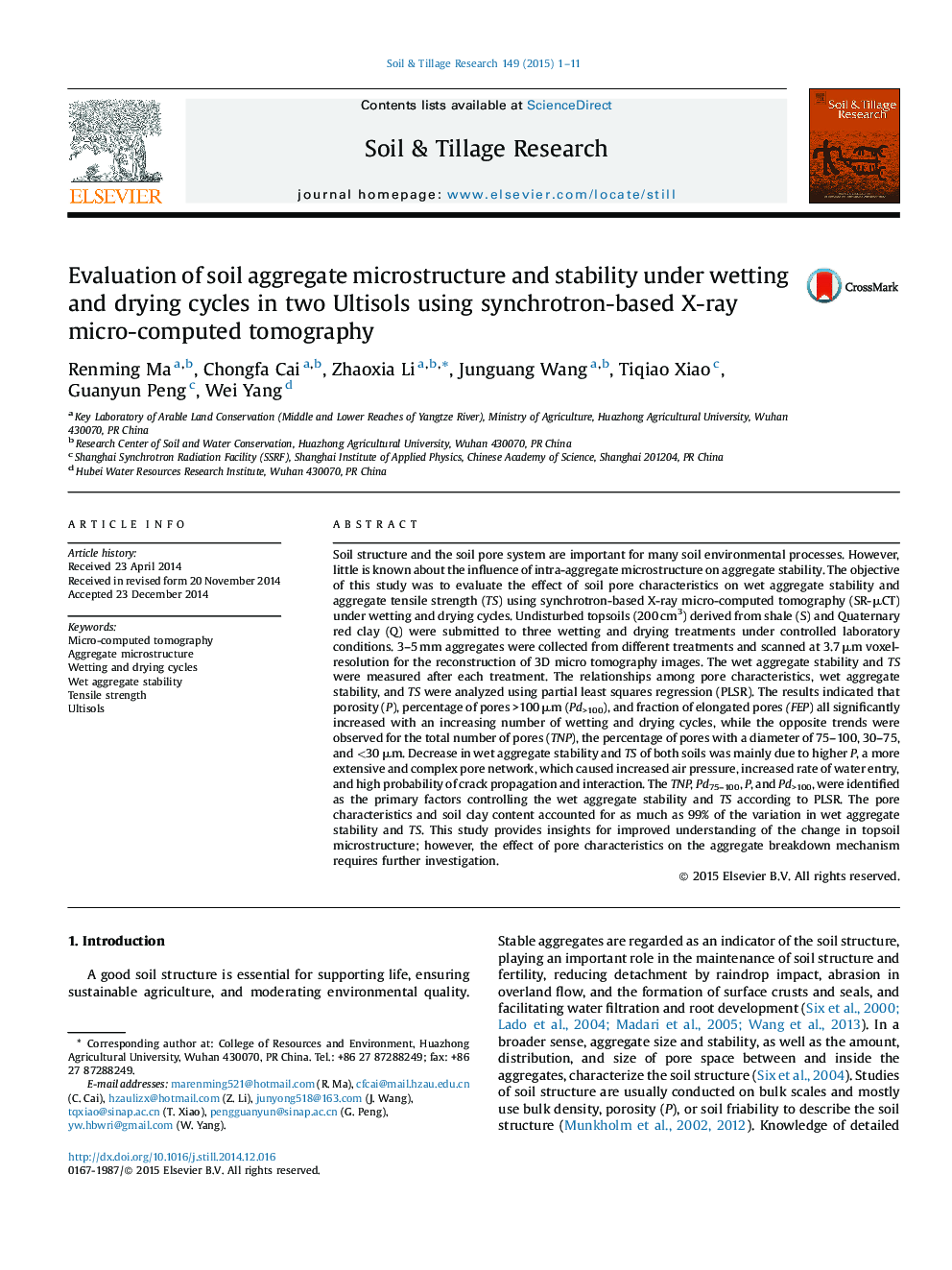| Article ID | Journal | Published Year | Pages | File Type |
|---|---|---|---|---|
| 305594 | Soil and Tillage Research | 2015 | 11 Pages |
•Aggregate microstructure was determined using a high-resolution X-ray CT scanner.•Aggregate microstructure was changed after wetting and drying treatments.•Wet aggregate stability and tensile strength decreased under wetting–drying cycles.•Contributions of pore characteristics to aggregate stabilities were examined.•There was a negative correlation between porosity and aggregate stability.
Soil structure and the soil pore system are important for many soil environmental processes. However, little is known about the influence of intra-aggregate microstructure on aggregate stability. The objective of this study was to evaluate the effect of soil pore characteristics on wet aggregate stability and aggregate tensile strength (TS) using synchrotron-based X-ray micro-computed tomography (SR-μCT) under wetting and drying cycles. Undisturbed topsoils (200 cm3) derived from shale (S) and Quaternary red clay (Q) were submitted to three wetting and drying treatments under controlled laboratory conditions. 3–5 mm aggregates were collected from different treatments and scanned at 3.7 μm voxel-resolution for the reconstruction of 3D micro tomography images. The wet aggregate stability and TS were measured after each treatment. The relationships among pore characteristics, wet aggregate stability, and TS were analyzed using partial least squares regression (PLSR). The results indicated that porosity (P), percentage of pores >100 μm (Pd>100), and fraction of elongated pores (FEP) all significantly increased with an increasing number of wetting and drying cycles, while the opposite trends were observed for the total number of pores (TNP), the percentage of pores with a diameter of 75–100, 30–75, and <30 μm. Decrease in wet aggregate stability and TS of both soils was mainly due to higher P, a more extensive and complex pore network, which caused increased air pressure, increased rate of water entry, and high probability of crack propagation and interaction. The TNP, Pd75–100, P, and Pd>100, were identified as the primary factors controlling the wet aggregate stability and TS according to PLSR. The pore characteristics and soil clay content accounted for as much as 99% of the variation in wet aggregate stability and TS. This study provides insights for improved understanding of the change in topsoil microstructure; however, the effect of pore characteristics on the aggregate breakdown mechanism requires further investigation.
